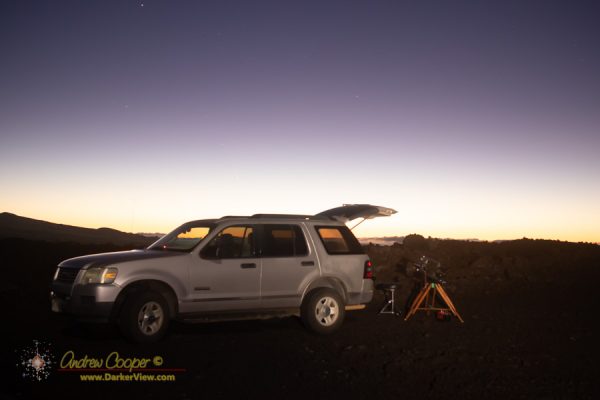Normally when I see a partial lunar eclipse on the calendar I do not take much note. As a partial will not create the deep red Moon that makes a lunar eclipse so striking, it is not something that I usually make a point to view.
This eclipse was a bit different. As this was a very deep partial, only a few percent of the Moon remaining in the sunlight, it should look pretty good… And it did. I setup the little TV-76mm scope to snap a few photos.
Even a not quite total lunar eclipse can be quite nice. Since this eclipse occured just a few degrees from the Pleiades star cluster it was possible to frame both in the camera with a wider field of view. Thus I changed to a classic 100mm f/2.8 Canon FD lens to shoot a few of the cluster and the eclipsed Moon.
Of course this means I will get to sleep at midnight and need to get up at 5am for work. The price I will pay for staying up to watch an eclipse.











